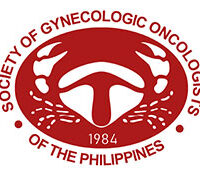The Society of Gynecologic Oncologists of the Philippines Foundation, Inc. (SGOP) is committed to protecting and respecting the privacy of its members and all data subjects.
We process personal data in accordance with the Data Privacy Act of 2012 (DPA) and its Implementing Rules and Regulations. The collection, use, disclosure, storage, and protection of personal data are conducted lawfully, proportionately, and transparently based on consent, contractual necessity, or legitimate interest.
Personal Information
SGOP collects and processes the following personal information when you submit your application, either manually or electronically, and throughout the duration of your membership:
- Full name
- Home and professional addresses
- Email address
- Date of birth
- Photo/Picture/Handwriting
- Signature
- Civil status
- Contact numbers
- Government-issued ID numbers
- Medical specialization and related professional affiliations (if applicable)
- Professional and educational background
- Medical History (for the Mutual Assistance program)
SGOP collects personal data through printed forms, attachments, and other required documents for physical submissions, while electronic data collection is conducted via online forms and email.
Purpose of Data Processing
SGOP processes personal data for the following purposes:
- Membership management – processing, verification, and status updates.
- Examinations and accreditation – Eligibility verification for written and oral examinations with the Philippine Board of Gynecologic Oncology (PBGO) and other related activities.
- Credential Validation – Evaluating the authenticity of all credentials for membership approval.
- Event Coordination – Organizing activities for the Annual Convention, Midyear Conventions and other professional gatherings.
- International Registration – Enrollment in international Medical Societies.
- Institutional Certification and Accreditation – Credential verification for certification and accreditation of institutions.
- Regulatory Compliance – Ensuring adherence to Continuing Professional Development (CPD) and Continuing Medical Education (CME) requirements of the Philippine Medical Association (PMA) and Professional Regulation Commission (PRC).
- Community Service – Conducting Medical Missions and Outreach programs.
- Education and Training – Hosting Webinars, Trainings, and Conferences.
- Research and Registry – Managing research projects and tumor registries.
- Competitions – Conducting Interesting Case, Research and Surgical Video Contests
- Documentation and archiving – Keeping records of Society activities.
- Communication – Sending updates via newsletters, website announcements, emails and social media posts.
- Financial compliance – Managing membership dues, payments, financial reports.
- Medical benefits – Processing claims under SGOP’s Mutual Assistance Program.
- Disciplinary actions – Handling censure, suspension or expulsion after due investigation.
- Marketing and promotions – Advertising SGOP’s activities
- Logistics and distribution – managing delivery of convention kits, souvenir items and event materials.
Data Handling and Protection Measures
SGOP employs strict measures to protect personal data by restricting access to authorized personnel and officers only, storing data in secure servers with encryption and firewall protection, conducting regular security audits to assess vulnerabilities, keeping physical records in a secured facility with controlled access, complying with National Privacy Commission (NPC) Circulars, including NPC Circular 16-01 on Data Protection, and implementing a Data Breach Response Plan in case of security incidents.
Data Sharing and Security Measures
SGOP does not share personal information with third parties without the consent of the data subject, except when required by law or regulatory authorities. When data is shared, it is protected through data-sharing agreements with confidentiality clauses, secure file transfer protocols, and non-disclosure agreements with third parties.
Data Retention and Disposal
Personal data will be retained for five (5) years, after which it will be securely disposed of in compliance with National Privacy Commission (NPC) guidelines and best industry practices. Physical records will be shredded, while digital records shall be kept in our files for as long as necessary.
Rights of Data Subjects
As a data subject under the Data Privacy Act of 2012, you have the right to be informed about how your data is processed, to access your personal data, to correct or update inaccurate or incomplete data, to request the deletion or restriction of your data, to object to processing under certain circumstances, to obtain a copy of your personal data, and to file a complaint with the National Privacy Commission if your rights are violated. To exercise these rights, you may submit a formal request to the SGOP Data Protection Officer (DPO).
Contact Information
For inquiries, concerns, or requests regarding your personal data, please contact our Data Protection Officer at sgop.dpo@gmail.com.
This Privacy Notice may be updated from time to time to reflect changes in our privacy practices. Any modifications will be communicated through our official website or via email notifications.




